If you have access to a smartphone, TV, or computer, you have undoubtedly encountered digital marketing. Technology has increasingly become intertwined with our daily lives, and each of those devices allows savvy marketers to reach us.
Whether it’s email marketing, social media advertising, display advertising, or even Connected TV, there are multiple valuable channels that your brand can use to meet your audience members where they already are.
In this digital marketing guide, we’re going to cover the ins and outs of digital marketing and top tips through the following sections:
- Digital Marketing: Covering the Basics
- Digital Marketing Plan: Key Aspects of Your Strategy
- Creating a Digital Marketing Strategy: 5 Tips for Your Team
Let’s begin with a brief overview of digital marketing to ensure you have all the basics down.

Digital Marketing: Covering the Basics
What is digital marketing?
In the most straightforward sense, digital marketing is any type of advertising that’s delivered through an online device. It uses the internet to target customers and get your message across.
Digital marketing encompasses a variety of online channels, including:
- Websites
- Social media
- Mobile apps
- Connected TV
Using consumer data to define your target audience and create targeted ad creative, you can reach your customers through these online channels and promote your products or services.
What is the role of digital marketing?
The role of digital marketing is to meet your organization’s audience where they’re already active—on their devices. Every day, your audience is immersed in a world of smartphones, laptops, televisions, social media, streaming services, and more.
And the role of technology in our daily lives is only growing; the offline and online worlds are rapidly colliding in new ways. For example, devices like “smart” kitchen appliances allow the internet to grab your audience’s attention on more and more devices.
Investing in digital marketing is a way for your organization to make the most of tech-based engagements to increase traffic, generate leads, and interact with more potential customers than before. For many modern marketers, it’s become the primary method of outreach.
What are the benefits of digital marketing?
When you leverage digital marketing, you’ll unlock a variety of benefits for your organization. These include:
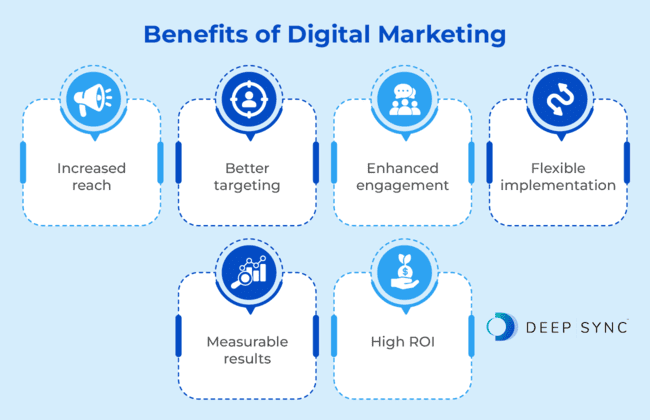
- Increased reach. Currently, there are 5.35 billion internet users worldwide. With digital marketing, you can reach potential customers near and far.
- Better targeting. Using your customer data and the information you glean from your digital platforms, you can determine customer demographics, interests, behaviors, and purchase intent and create content that resonates with them.
- Enhanced engagement. As a result of these more personalized campaigns and interactive marketing materials, you’ll see higher engagement rates, leading to more conversions.
- Flexible implementation. Since you’re not producing physical materials, digital marketing allows you to experiment and adjust your campaigns as needed. As a result, you can optimize your strategy based on customer feedback and produce the best possible results.
- Measurable results. While it may be difficult to determine the effectiveness of traditional marketing methods, digital marketing channels produce analytical insights into the success of your campaigns. Digital marketing key performance indicators (KPIs) include website traffic, conversion rates, click-through rates, and social media impressions.
- High return on investment (ROI). Traditional marketing methods like direct mail and print advertising have higher associated costs than digital channels. Whether you’re writing a blog, creating a social media post, or drafting an email newsletter, these communications have little to no cost beyond the initial time investment and are extremely effective—resulting in a high ROI.
Taking the time to optimize your digital marketing strategy will produce more relevant content for your customers, allowing you to capture their attention and yield better results for your campaigns.
Digital Marketing Plan: Key Aspects of Your Strategy
Let’s explore the building blocks of a successful digital marketing strategy—marketing assets, digital channels, and other tools.
What are digital marketing assets?
Digital marketing assets, or collateral, refer to the information you share via digital marketing channels. If we were discussing traditional, non-digital marketing methods, this would refer to assets such as physical mailers, billboard graphics, and even promotional merchandise.
Most successful digital marketing strategies use some combination of the following:
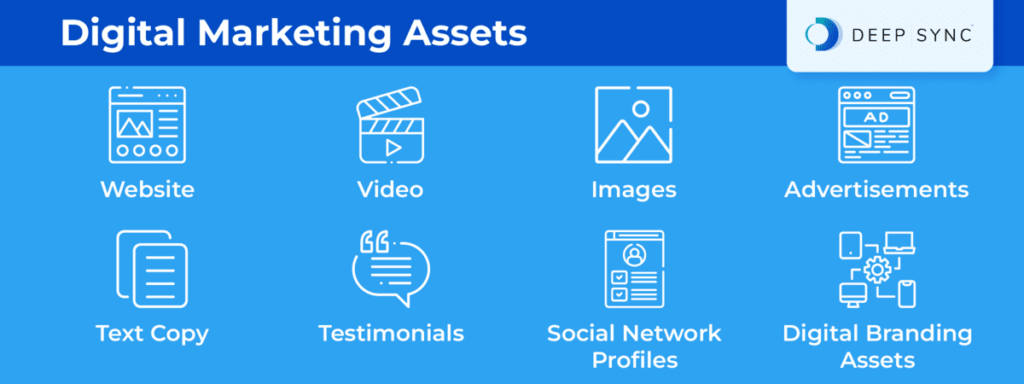
- Website: If you’re using digital advertisements, you’ll also need a website to send users to. Here, you can drive conversions like signing up for your email newsletter or making a purchase.
- Video and Images: The digital attention span is short, and strong visual assets can make an impact quickly and effectively.
- Advertisements: Much of digital marketing is done via advertisements, and one way to step up your game is to include animated or video ads.
- Written Copy: While video, images, and graphics are important, strong copy is what fuels all of these digital marketing efforts. Think of emails, social media posts, or even short ads; each will need a written aspect.
- Audience Testimonials: Social proof is a valuable tool in digital marketing, so testimonials that vouch for the value of your organization or brand can be helpful.
- Social Network Profiles: If you’re using social media advertising, these ads will need strong profiles to point back to.
- Branded Assets: Strong digital branding assets such as your logo and graphics are necessary to create a uniform design across your marketing collateral.
Now that you understand what types of collateral to generate, let’s explore the channels you might use to deliver these digital marketing assets.
Top Data-Driven Digital Marketing Strategies
With so many digital marketing channels to choose from, how do you know which ones yield the best results? We recommend using a combination of the following strategies:
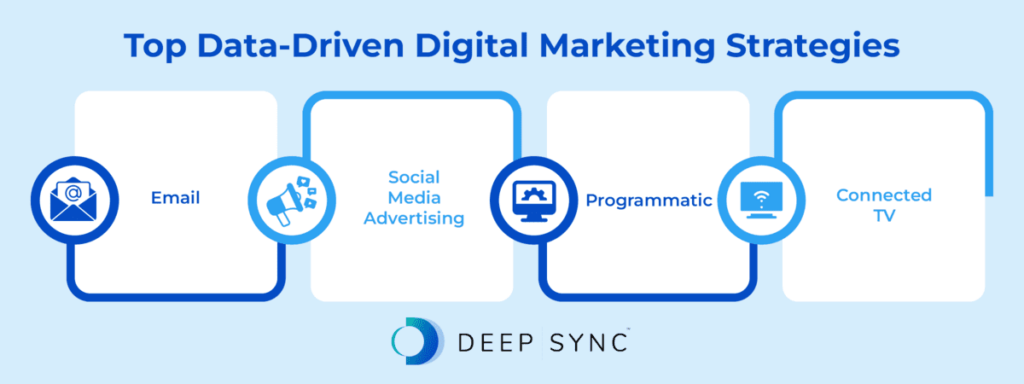
Email Marketing
Email marketing is a digital marketing strategy that businesses can use to acquire new customers and build the loyalty of existing audiences. However, this strategy is much more than simply sending a batch email from your company.
To maximize your email marketing results, you’ll need to test your approach to optimize the content for conversion. Additionally, we recommend enriching your database to ensure you have maximum coverage of email addresses for your customers.
Some best practices for email marketing include:
- Avoid sending the same content to all of your audience, opting instead to personalize messages for each consumer segment.
- Embrace mobile-first design, as about 1.7 billion people use their phones to check their email.
- Aim to showcase your product or organization in a highly engaging, visual way with videos, images, or other assets.
- Remember that dark mode can impact email viewing, so update your design practices accordingly so users can easily read them on all devices.
Whether you’re sending email newsletters, company updates, or product highlights, email marketing is a powerful way to reach your audience online.
Social Media Advertising
Social media advertising involves serving ads to your target audience via social media platforms. One great example of this is paid ads on Facebook, Instagram, and TikTok, which display your marketing assets directly within the news feeds of your ideal audience members.
You can discover and target these audiences using a variety of sources, such as your first-party data, third-party data, lookalike audiences, custom audiences, or a combination of multiple sources.
A few best practices when working with social media advertising include:
- Test creative variations of your ads to see which options result in the highest social media engagement.
- Keep your copy short and sweet.
- Caption all video ads so people can watch them without sound.
- Make the most of the platform-specific features to facilitate remarketing and the discovery of lookalike audiences.
Remember to leverage platforms where you’re most likely to connect with your target audience. For example, if you’re running a campaign for Gen Z customers, you may use Instagram and TikTok since these platforms are popular among younger demographics.
Programmatic Advertising
Programmatic advertising refers to the use of automated technology on a Demand-side Platform (DSP), such as The Trade Desk or Google DV360, to buy and sell digital ad space. It uses artificial intelligence (AI) and algorithms to streamline the ad-buying process, allowing your business to efficiently run data-driven ad campaigns through display, video, social media, and more.
Explore how programmatic advertising is taking off with these statistics:
- 2 out of every 5 marketers will increase their programmatic ad spend over the next year due to its high ROI.
- Between 2013 and 2023, programmatic digital display ad spending in the United States increased from $4.99 billion to $135.72 billion.
- Global programmatic advertising spending is expected to reach $779 billion by 2028.
This type of digital marketing serves as an alternative to traditional manual ad placements, allowing businesses to save time and resources. Additionally, this method enables you to target specific audiences based on their demographics, interests, and online behavior. With the combination of the small time investment and highly targeted ads you’ll produce from this tactic, you’ll achieve a high ROI.
Connected TV Advertising
While cable providers once dominated the TV game, streaming now takes the cake in modern viewing. Advertising on Connected TV (CTV) shares your organization’s video advertisements with customized audiences that meet specified criteria—whether geographic, demographic, or programming-related.
These ads are most often in 15- or 30-second placements and are presented in a non-skippable format (unlike pre-roll video ads), giving you confidence that your intended audience will view them.
Let’s check out a few key stats related to CTV:
- 88% of households in the United States have at least one connected TV device.
- It’s expected that CTV ad spending will reach over $30 billion in 2024.
- 43% of marketers say they invest in CTV advertising because it’s proven to drive higher ad conversion rates.
More people are streaming video than ever before, making this an innovative way to reach your target audience.
Powering Other Digital Marketing Strategies with Deep Sync Data
We’ve briefly discussed how data can improve your digital marketing efforts, empowering you to discover your target audience and create content that aligns with those consumers.
While the tactics in the previous section represent the top data-driven digital marketing strategies, there are other digital marketing methods that your business can optimize with the help of a data provider like Deep Sync.
Let’s say you’re leveraging content marketing to inform your audience about your area of expertise through short-form social media content. When you build custom audiences on Deep Sync One and activate them on social media platforms like TikTok and Facebook, you can promote the content you’ve developed to those most likely to be interested through social media ads.
When you incorporate data into your digital marketing efforts, you’ll better reach your desired customers and increase conversions.
Creating a Digital Marketing Strategy: 5 Tips for Your Team
With the following tips, your team will have a solid foundation to build a strong digital marketing plan. Let’s dive in.
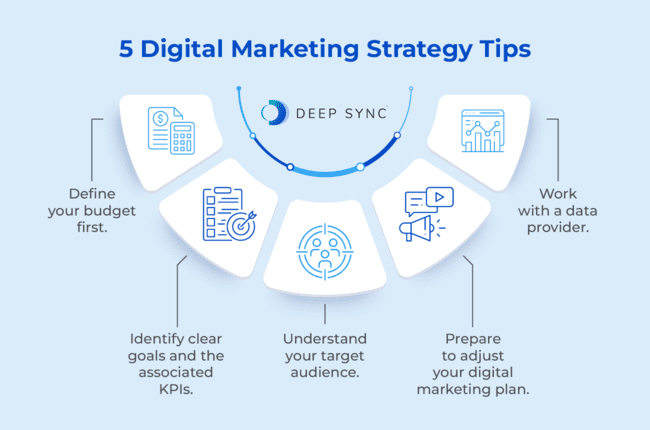
1. Define your budget first.
Before you can roll out a marketing strategy, you need to define your budget.
The cost of digital marketing can be incredibly wide-ranging. It could mean a multi-million dollar multichannel initiative, or it could be an essentially free (not including efforts) campaign done by your team alone.
Define how much you’re willing and able to spend before making decisions about your strategy. This step will prevent you from investigating comprehensive—but out-of-budget—digital marketing efforts that your team simply can’t afford. Do keep in mind, however, that the internet has become quite saturated, so to reach new customers it is usually necessary to have an advertising budget.
Then, from this foundation, you can build a campaign that achieves your goals while remaining within your budget. After completing this exercise, you’ll likely be able to achieve even more than initially expected!
2. Identify clear goals and the associated KPIs.
After outlining your budget, your next step is to determine your goals and specific key performance indicators (KPIs) that you’ll use to measure your progress.
Digital marketing efforts yield a plethora of data—so much so that it could be a challenge to measure the success of your campaign if you’re not sure what you’re looking for. Let’s walk through an example of one digital marketing goal, and the measurable KPIs a brand may choose to define success:
- Goal: Increase social media engagement.
- KPI 1: Increase the click-through-rate of social media advertisements by 25%.
- KPI 2: Increase follower count by 15%.
- KPI 3: Increase sharing of social media content by 10%.
By identifying goals and the associated metrics to measure progress, your team can better understand your efforts and continue improving them over time.
Outline benchmarks and review your KPIs at each point. If things are moving in a positive direction, you can trust that your digital marketing strategy is effective; if not, it’s time to return to the drawing board.
3. Understand your target audience.
Across various digital marketing channels, many businesses are attempting to reach your target audience. It’s crucial to stand out from the crowd.
The most impactful way to differentiate your brand is to truly understand your audience and market directly to them. This means sending personalized ads to appeal to your exact target audience, keeping their preferences, interests, and demographics in mind. Most often, this level of specificity and personalization comes down to having valuable data to inform your marketing efforts.
Whether you’re enhancing your first-party data to better understand your current customers, leveraging third-party datasets to reach new audiences, or identifying consumers similar to your own with lookalike audience modeling, data is at the core of understanding and reaching your target market.
4. Prepare to adjust your digital marketing plan.
Whether it’s the emergence of new social media platforms, new streaming services, or something else, the world of digital marketing is evolving every day.
Even if you construct the most effective digital marketing strategy, it’s still important to remain flexible and be prepared to adjust course. There are a few steps you can take to be prepared when the tide of digital marketing shifts:
- Invest in effective marketing assets. If you have valuable marketing communications that speak to your audience’s needs, you can easily adapt these materials for emerging platforms.
- Pay attention to your audience’s movement. If the data suggests your audience is moving to new channels, follow the trend. But, if the data suggests your audience is staying put, ensure you do the same.
- Work with a data provider. With up-to-date customer data, you can ensure your digital marketing strategy aligns with your audience’s current interests and preferences. We’ll dive deeper into this point with the next tip.
The digital media landscape is ever-changing. Understanding now that your digital marketing strategy isn’t set in stone and being flexible will set you up for success in the long run.
5. Work with a data provider.
Working with a data provider allows you to gain access to industry-leading data and tools. With this, you can learn more about your customers, discover new audiences for your brand, and determine where those audiences are consuming media.
Some data providers, like Deep Sync, specialize in activating data for digital marketing and can help your team successfully launch campaigns on unfamiliar channels.
Specifically, Deep Sync can catapult your business into digital marketing success by enabling you to:
- Access our privacy-first, proprietary audiences and the nation’s leading third-party datasets
- Mix and match hundreds of demographic, firmographic, lifestyle, and geographic attributes for precise online targeting
- Create precise social audiences on demand on Deep Sync One
- Improve marketing performance with data hygiene and enhancement solutions
If you’re interested in working with a data provider to construct a data-driven digital marketing strategy, contact the Deep Sync team today.
Digital marketing is a powerful way to meet your audience exactly where they are—on their digital devices.
With a strong, data-backed strategy, you can take your digital marketing efforts to the next level. To supercharge your digital marketing strategy and leverage your customer data for digital marketing purposes, work with Deep Sync’s data experts.
To learn more about digital marketing, explore the following additional resources:
- Data-Driven Marketing: A Comprehensive Guide to Success. Data is the key to your marketing strategy. Explore this guide for tips on how you can use data to improve your efforts.
- Data-Driven Digital Marketing Strategies for Enhanced Targeting. Ready to get started with digital marketing? Check out our data-driven digital marketing strategies and services.
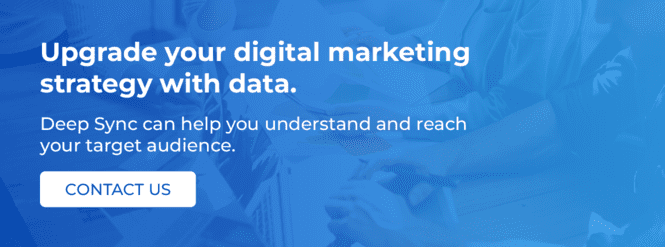








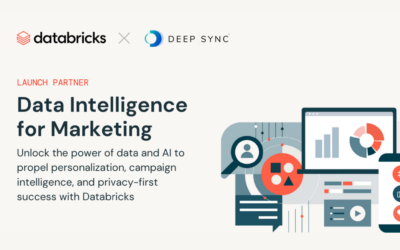



0 Comments